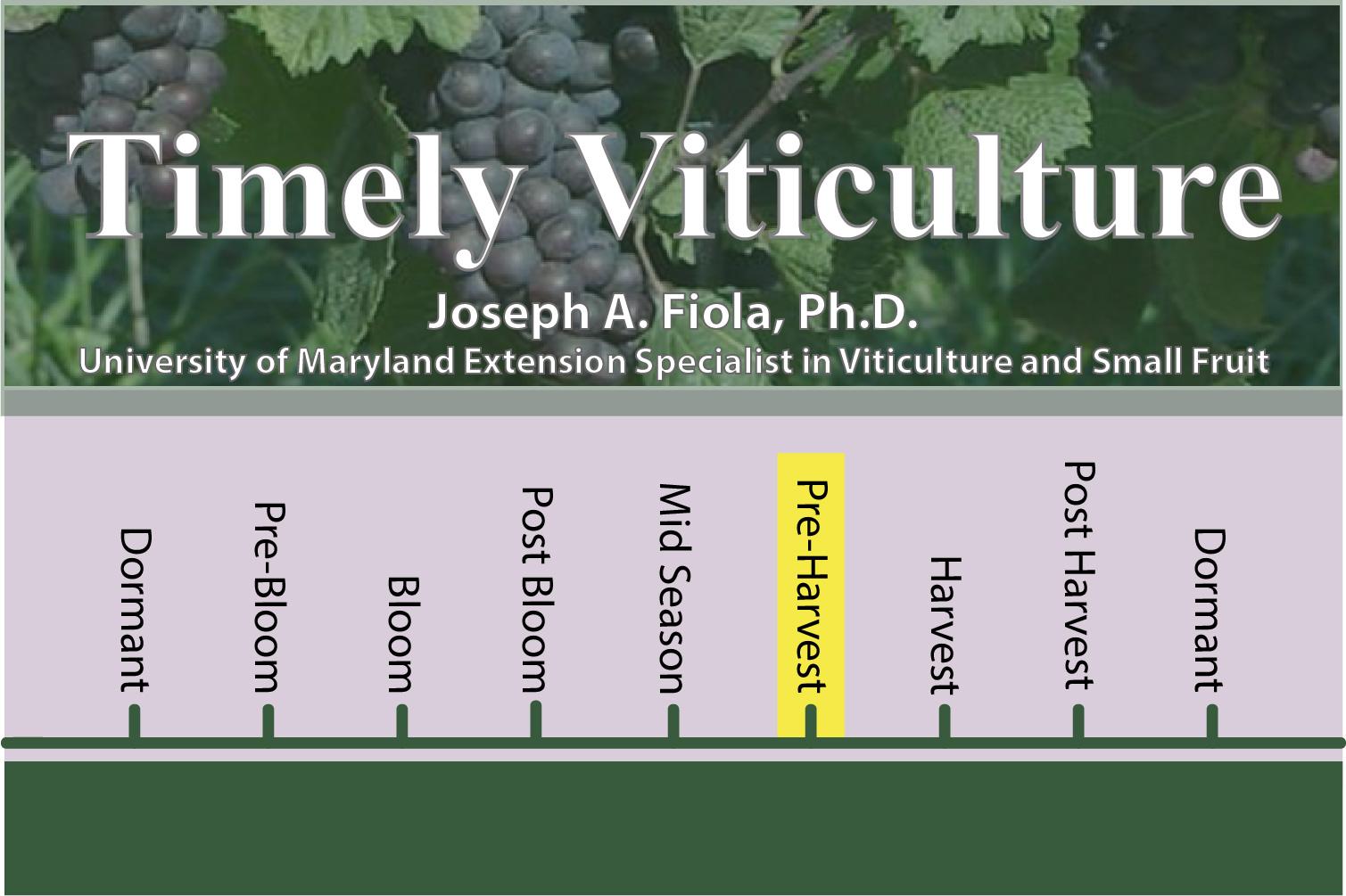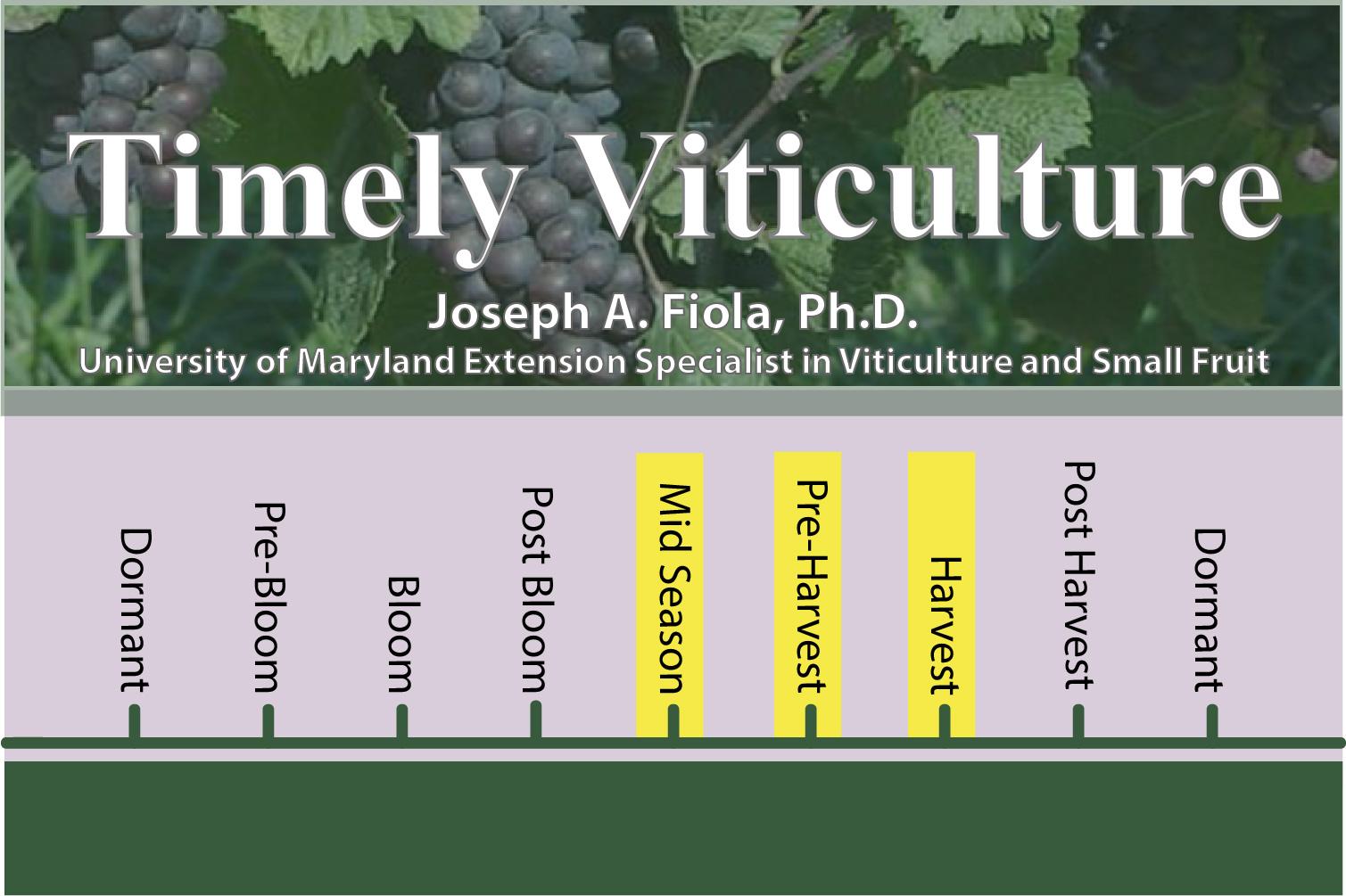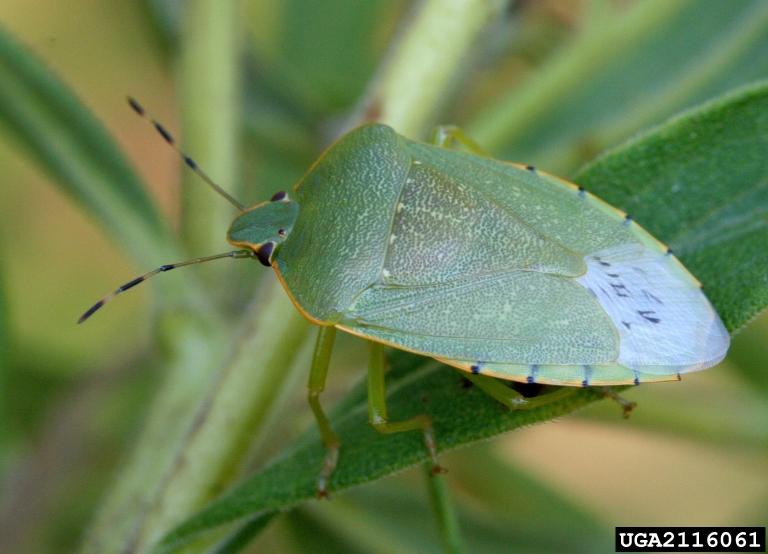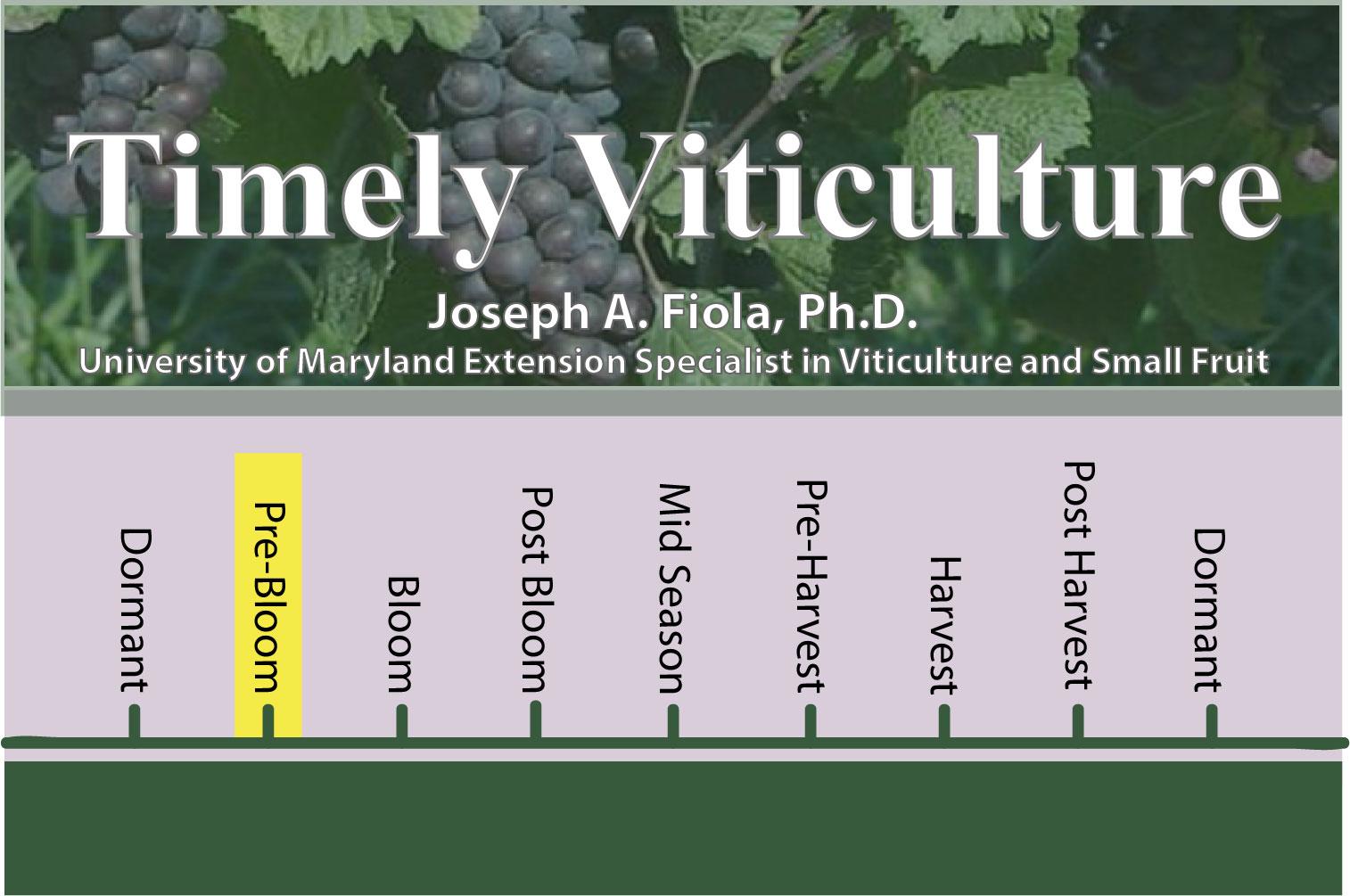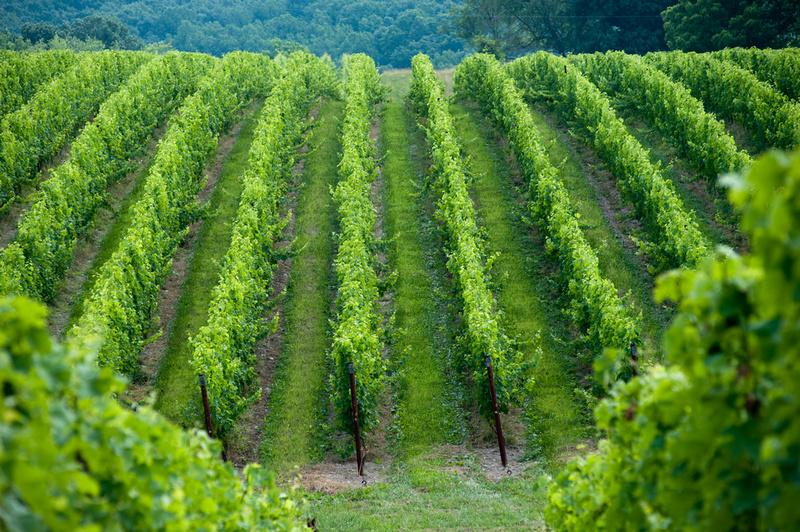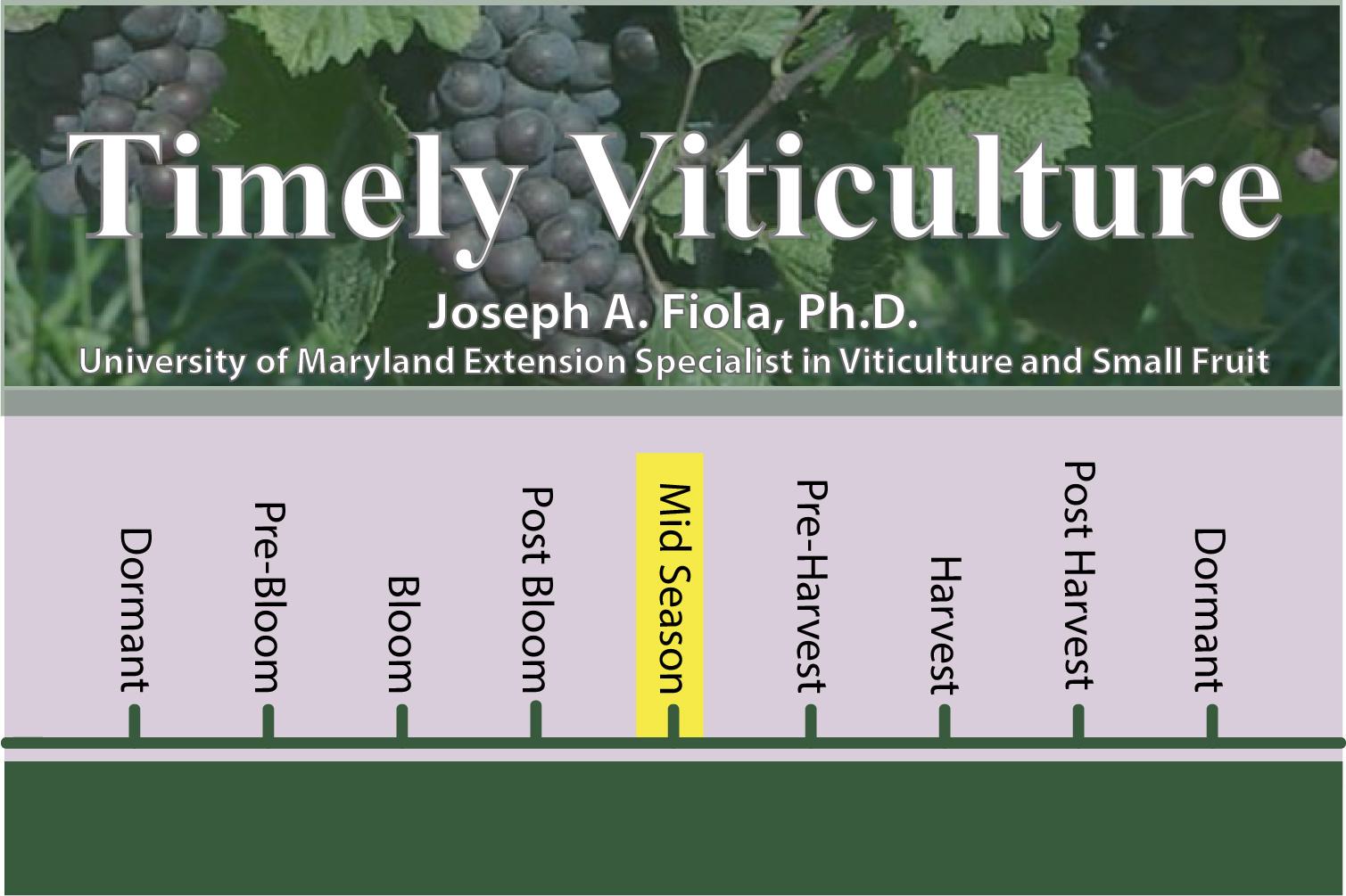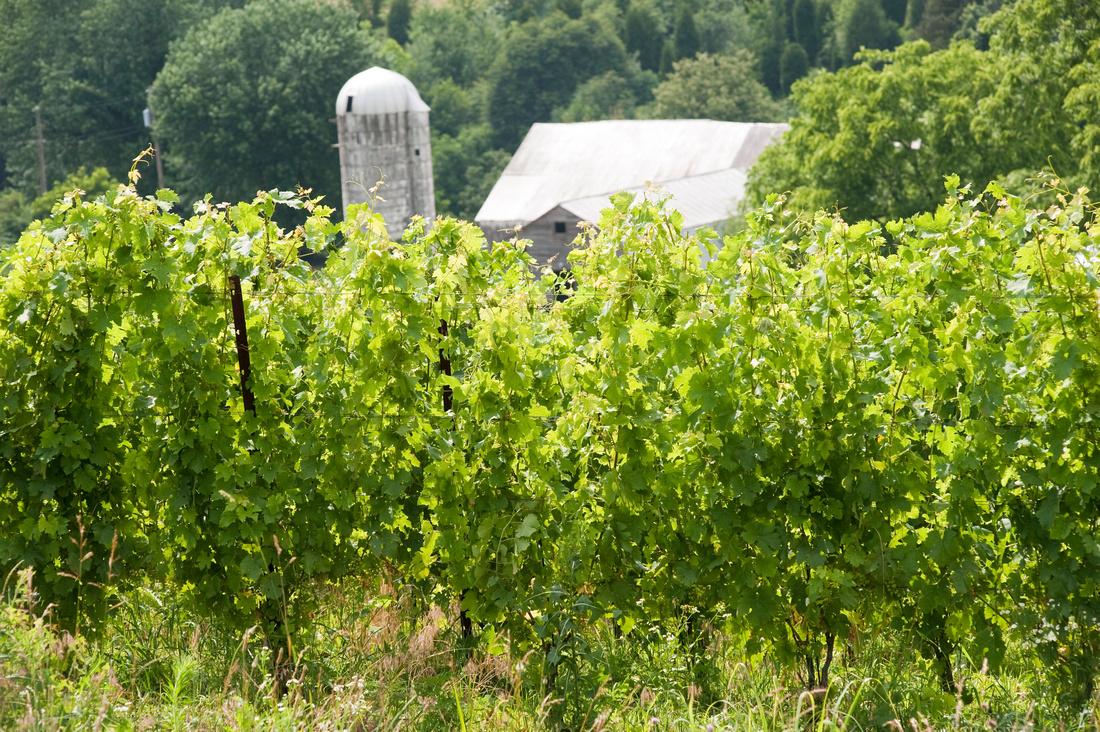Updated: May 11, 2022
Guidelines for Developing an Effective Fungicide Spray Program for Wine Grapes in Maryland (FS-848)
The purpose of this fact sheet is to help wine grape growers in Maryland develop effective fungicide spray programs to manage a complex of five major fungal diseases affecting vines and fruit: powdery mildew, downy mildew, black rot, Botrytis bunch rot, and Phomopsis cane and leaf spot. The spray schedules below suggest several options for each spray but do not include all fungicides registered in Maryland for control of these diseases. Three supplemental tables are provided to further assist growers in choosing fungicides. Table 1 rates the effectiveness of all fungicides mentioned in the fact sheet against these diseases. Information on effectiveness is intended as general guidance only. Results in a given vineyard will depend on the weather, disease pressure (level of inoculum present), canopy management, age of vines, fungicide formulation and rate, and spray intervals and coverage. Table 2 lists resistance-prone fungicides by chemical class (mode of action) to help growers choose rotational partners with different modes of action fungicides mentioned in this guide. Author: Anne DeMarsay, Ph.D., The Fruit DoctorTM; Title: The New Guidelines for Developing an Effective Fungicide Spray Program for Wine Grapes in Maryland, 2012 (FS-848)
